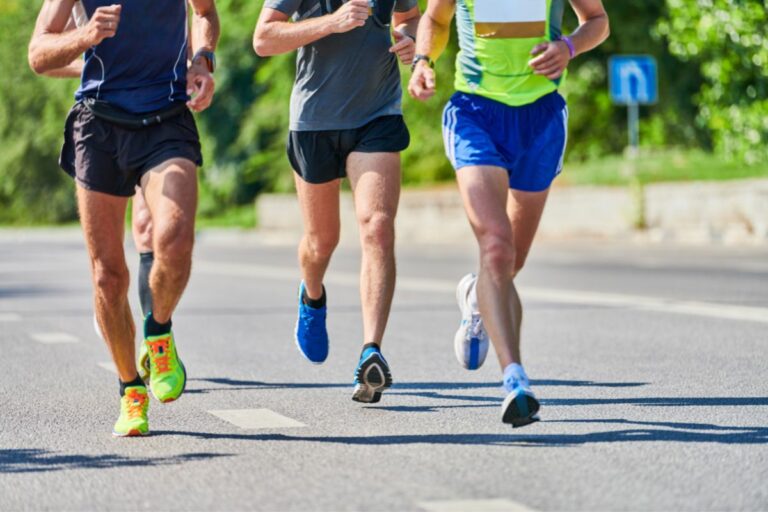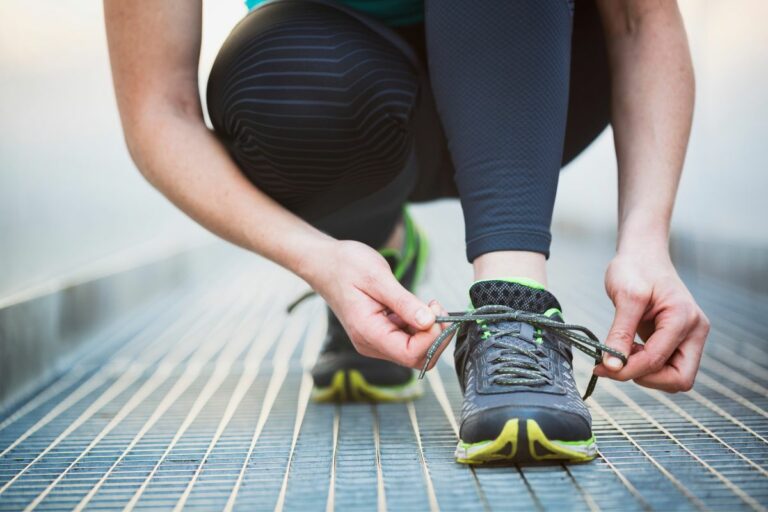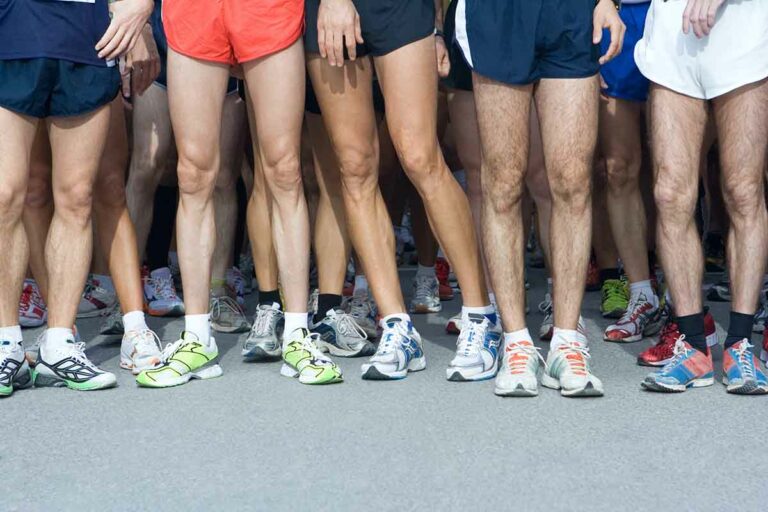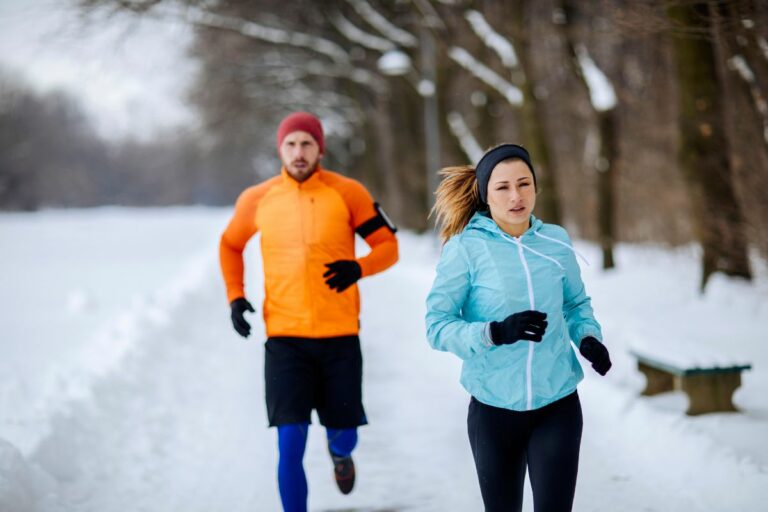What To Wear When Running: Gear To Get You Started

Running is one of the most cost-effective ways to help improve your fitness and lose weight. Not only does it yield results in a very reasonable time frame, but it also COSTS next to nothing to do.
All you need are a few basic items of running gear and a sidewalk or track. We can’t provide the sidewalk, but in this article, we will look at some of the things you should be wearing while running.
1. Running Shoes
The most obvious thing that you need to wear when going for a run is running shoes. While it may be obvious to wear running shoes, make sure that you have the right running shoes that fit you properly.
The market for running footwear is incredibly oversaturated, however, there is a clear distinction between high-quality products and low-quality products.
When you buy high-quality footwear for running, your foot and ankle will be adequately supported.
Comfortable shoes (like Hoka Bondi or Hoka Clifton) allow your foot to flex properly with each step.
Many high-quality running shoes will also have technology built into them that allows your feet to breathe and helps to improve your gait and stride.
If you purchase low-quality running footwear, the shoe will not adequately support your foot or ankle and can lead to foot, knee, or hip injuries.
They also may not allow your foot to flex properly as you run which can lead to discomfort in your feet during and after your run. They may also cause blisters and begin to fall apart very quickly.
2. Sports Bra
Although this may seem like a piece of gear that applies exclusively to female runners, sports bras can also be beneficial for many male runners too.
If you are a runner with breasts, you will know the pain and discomfort of running with an ill-fitting sports bra or running without one altogether.
It certainly doesn’t make you want to get out there and pound those streets. Therefore, it is important that you invest in an appropriate and well-fitting sports bra.
More often than not, this is best achieved by visiting a specialist running store and being measured for a bra that fits perfectly and provides enough support for high-impact activities such as running.
Sports bras can also be useful for male runners, big and small.
If you are a larger male that is getting into running to improve your fitness and lose weight, you may benefit from a sports bra for the same reasons as female runners do.
However, you won’t have to purchase a female sports bra as you can get ones that are designed for men, much like the ones soccer players wear.
If you are a long-distance male runner you may benefit from the nipple protection that a sports bra offers to help avoid the pain of chafing.
3. Shorts Or Leggings
There is quite a lot of choice when it comes to the pants that you wear when you are running.
If you live somewhere hot and humid, or simply enjoy feeling the breeze on your skin to keep you cool when you run, shorts are probably your best bet.
There are options within the sub-category of shorts such as cycling shorts or running shorts. Cycling shorts can be a great option if you are concerned about your shorts riding up or if you want slightly more coverage.
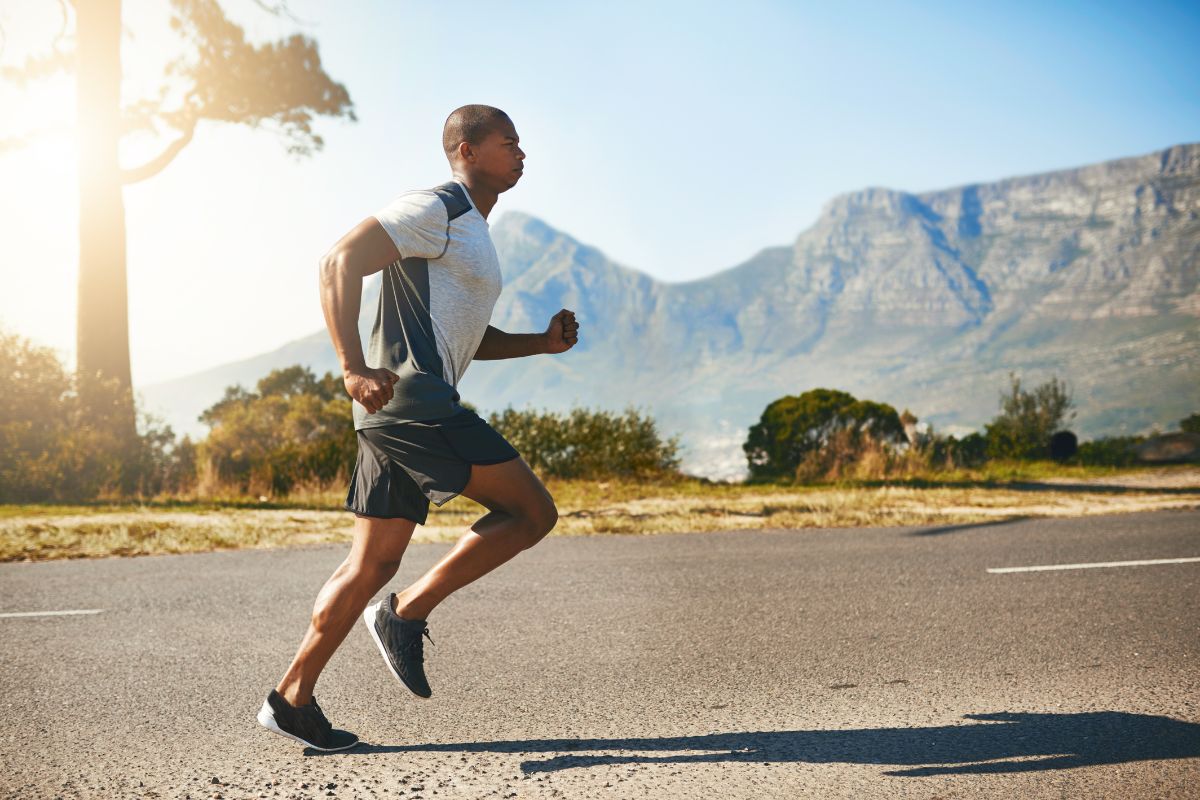
Running shorts are a lot looser and shorter than cycling shorts and are a great choice for anyone who doesn’t like to feel constricted when running.
Leggings are a great option if you live somewhere colder or run in adverse weather during the winter.
Not only do leggings provide full coverage of your legs, but running leggings often have some level of compression which can help improve circulation and provide your joints with a certain level of protection from injury.
4. T-Shirt
If you are a casual runner, you might just want to throw on an old T-shirt when you go for a run, one that you don’t care how sweaty it gets.
However, if you are more serious about your training or want all the gear to help you get into the right headspace, a specific running T-shirt could be a better choice.
Running T-shirts are often made with lycra or spandex in them to help keep them tight to your body.
This provides compression to improve circulation and makes you more aerodynamic when you run.
5. Waterproofs
If you live somewhere that has wet weather regularly and are planning to run outdoors during rainy weather, you will want to invest in some waterproofs.
Running waterproofs tend to be lightweight and more showerproof than waterproof, but the protection offered is adequate to protect wearables during a downpour.
6. Cap & Shades
If you are going to be running in bright sunshine, it is a good idea to invest in a cap or some running shades.
If you are running towards the sun and are having to squint or are struggling to see, you increase your chances of tripping and injuring yourself.
7. Gloves & Socks
If you are running during the winter months, investing in a pair of running gloves can be a good idea.
Even if you are able to run in a T-shirt year-round because you work up enough of a sweat, you should still protect your extremities from the cold.
Running socks are also a wise investment to protect your feet from excessive rubbing, blisters, and corns.
8. Running Belt & Wearables
Running belts can be a useful way to store your keys, phone, and any other valuables that you may want to bring with you on your run.
Running clothes often don’t feature that many pockets and so a belt can provide you with the storage you need. Wearable fitness tracking technology can be a great addition to your run to help you track your progress.
The Bottom Line
There are many things that you can wear running to help improve your comfort and performance.
While none of the things in this article are necessary to be able to run, beyond the footwear, all of them can help benefit your run in some way.
And if you’re wondering what to wear in colder temperatures, you’ll need more layers. To figure out what layers to have, you can read our article “What to Wear to Run in the Cold? Dress to Stay Warm in Any Temp” by clicking here.


